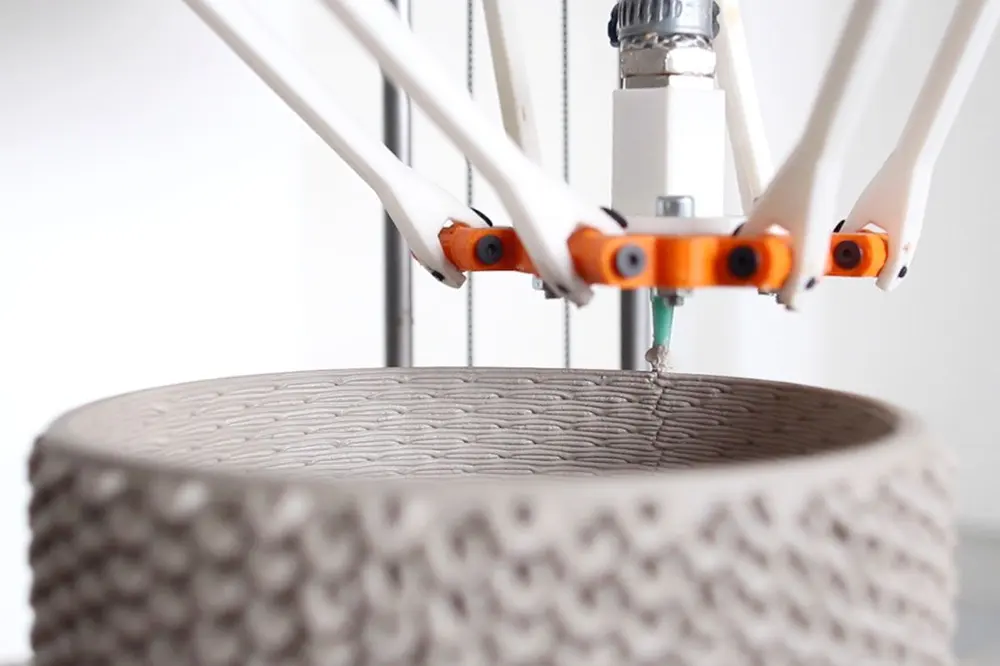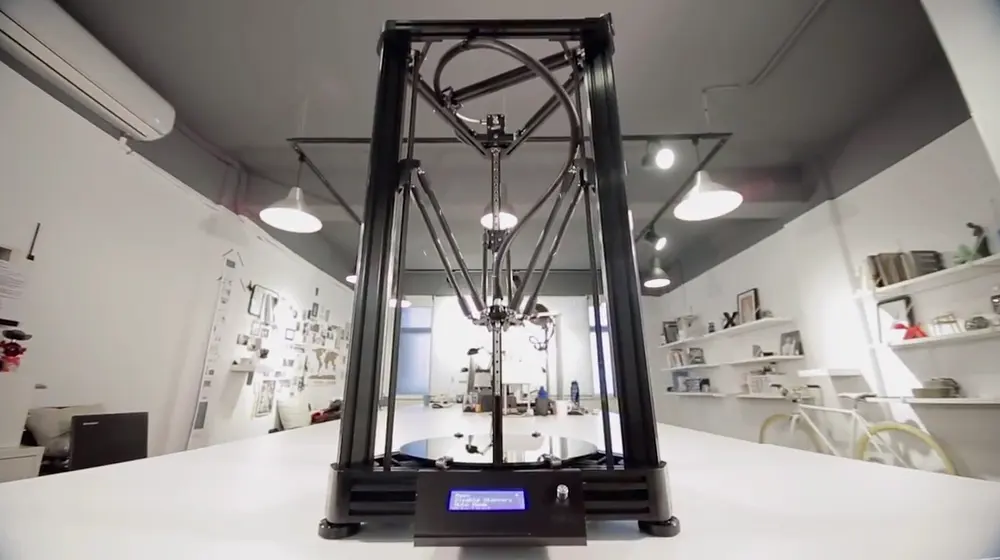You may have heard of delta 3D printers, but what are they really? How do they work? Should you get one? Here are the answers, simply explained.
When people think of 3D printers, they usually think of Cartesian-style FDM printers, such as the Prusa i3 or the Ultimaker 2. That’s no surprise, since they’re by far the most common type of 3D printer on the market.
These printers are labeled as Cartesian because they move along the Cartesian plane (like the one from math class). For these printers, movements occur along the X-, Y-, and Z-axis rods. That is, the extruder or bed move left, right, forwards, backwards, up, or down.
Delta FDM printers, however, use a different system of movement. Instead of XYZ rods, delta printers support the extruder with three arms, which are attached to three vertical posts arranged in a triangle.
Each arm can only move vertically up and down, but by moving each arm independently the extruder is able to move in all directions. See for yourself in the video below – it’s fascinating to watch!
What Makes Delta 3D Printers Different?

Delta-style and Cartesian-style FDM printers have the same main parts, such as the extruder, bed, or motors – they’re just arranged and placed differently. As such, you wouldn’t be able to tell for sure whether a finished print was made with a delta 3D printer.
Delta printers print with the exact same filament as well, such as PLA, ABS, flexibles, and other exotic filaments.
And that’s where the similarities end.
Delta printers are built for fast printing, with heavy motors and extruders fixed on the sides and top. The toolhead is kept very light and minimal so that the printer can maintain high accuracy at high speeds.
The bed of a delta printer is usually circular instead of rectangular, and it never has to move. Though the average bed size is pretty small, the build height tends to be much taller than Cartesian printers. As such, a typical delta 3D printer has a print space that looks like a tall cylinder.
In case you’re wondering, delta and Cartesian aren’t the only movement systems out there: Read about polar and SCARA printers here.
Should I Buy a Delta 3D Printer?

Ultimately, the decision to buy is up to you, but to help, here’s a summary of the pros and cons.
PROS
- Fast, efficient printing. Though it may take some fiddling with print settings depending on what delta you buy, these printers are built for quick production. Print speeds up to 300 mm/s are not unheard of and can still come out looking fantastic.
- Higher print quality. This point is debatable since it really depends on what you’re printing and how well you know your printer. Due to the lightweight extruder and fixed bed, jerk and acceleration are minimized while printing, which can smooth out print inconsistencies at low speeds.
- Mesmerizing printing. Believe it or not, this is one of the biggest reasons why people buy deltas — it just looks cool. Bundle up on a cold night, sip some hot chocolate, and watch the little thing go.
CONS
- Limited build space. Deltas have a small but tall cylindrical build space. Depending on what you want to print, you can run out of space pretty quickly. And if you never plan on utilizing its awesome height, you may want to stick with a Cartesian printer instead.
- Difficult to troubleshoot. The delta 3D printing community is pretty small compared to its Cartesian counterpart. If you have a question about fine-tuning your printer or where to get spare parts, you won’t have as big a base to draw from.
If you’re wondering what the best delta 3D printers on the market are, check out our curated list here: Best Delta 3D Printers.
Related Articles
